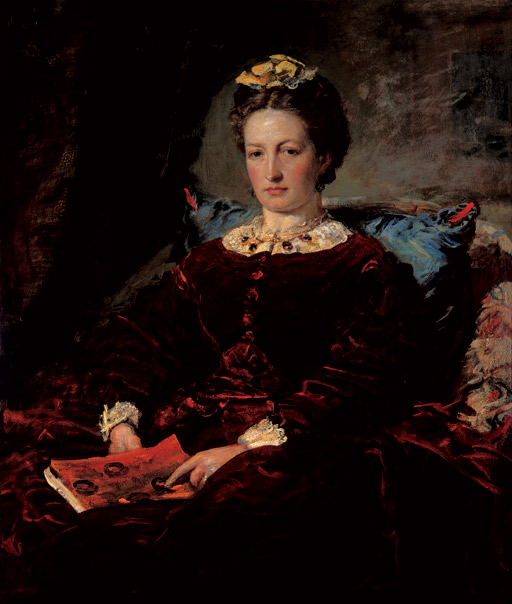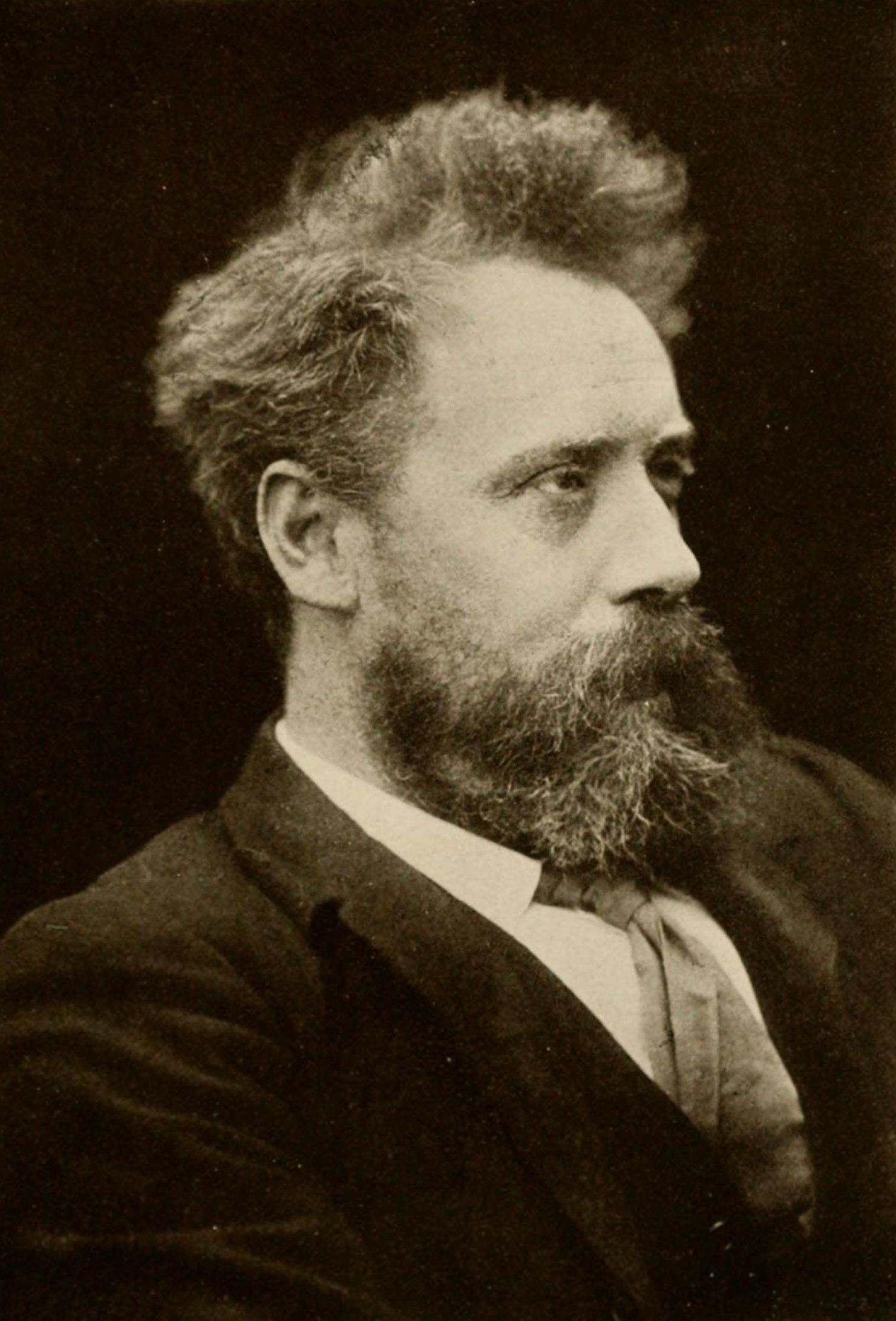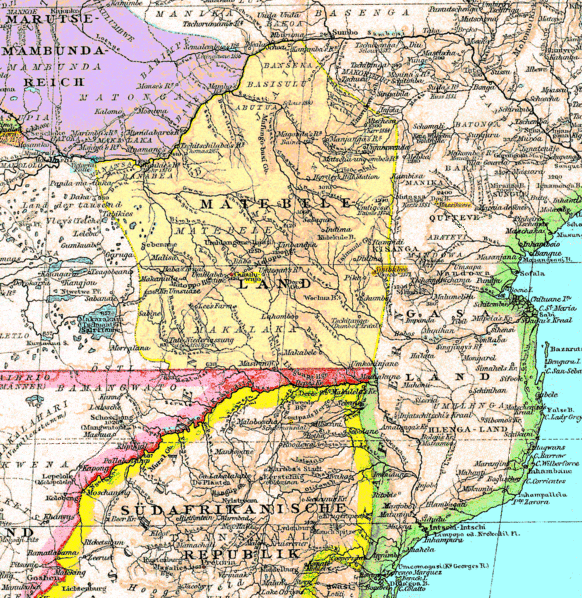|
Jessie Weston (writer)
Jessie Edith Weston (also known as Jessie Weston-Campbell, 1865 – 21 May 1939) was a New Zealand novelist and journalist. She was best known for her novel ''Ko Méri, or, A Cycle of Cathay: A Story of New Zealand Life'' (also known as ''Ko Meri''), published in 1890. The novel formed part of what was termed the New Zealand literature#Maoriland movement: 1870–1914, Maoriland movement in New Zealand literature. She spent the rest of her life living in the United Kingdom, where she wrote articles promoting imperialism for British newspapers and magazines, and published a collection of essays called ''Imperialism'' (1898) under her pseudonym C. de Thierry. Early life Weston was born in Parnell, New Zealand, Parnell, a suburb of Auckland, in 1865. Her father, Robert William Weston, was a Scottish agriculturalist, who immigrated to New Zealand from New South Wales in the 1860s and became one of Whangārei's pioneer settlers. He wrote articles on agriculture for ''The Daily Souther ... [...More Info...] [...Related Items...] OR: [Wikipedia] [Google] [Baidu] |
Parnell, New Zealand
Parnell is a suburb of Auckland, New Zealand. It is one of New Zealand's most affluent suburbs, consistently ranked within the top three wealthiest, and is often billed as Auckland's "oldest suburb" since it dates from the earliest days of the European settlement of Auckland in 1841. It is characterised by its mix of tree lined streets with large estates; redeveloped industrial zones with Edwardian town houses and 1920s bay villas; and its hilly topography that allows for views of the port, the Waitematā Harbour, Rangitoto Island and the Auckland Domain. To its west lies the Auckland Domain, to the south Newmarket, and to the north the Ports of Auckland. Parnell Rise and Parnell Road make up the main road through Parnell. Parnell Rise leads to the central business district to the west; Parnell Road runs from Parnell Rise uphill to the top of the suburb, and then bends almost 90 degrees and continues towards Newmarket in the south-east. Parnell Road ends at the intersection o ... [...More Info...] [...Related Items...] OR: [Wikipedia] [Google] [Baidu] |
The Graphic
''The Graphic'' was a British weekly illustrated newspaper, first published on 4 December 1869 by William Luson Thomas's company Illustrated Newspapers Ltd. Thomas's brother Lewis Samuel Thomas was a co-founder. The premature death of the latter in 1872 "as one of the founders of this newspaper, nd whotook an active interest in its management" left a marked gap in the early history of the publication. It was set up as a rival to the popular '' Illustrated London News''. The influence of ''The Graphic'' within the art world was immense, its many admirers included Vincent van Gogh, and Hubert von Herkomer.Mark Bills, "Thomas, William Luson (1830–1900)", ''Oxford Dictionary of National Biography'', Oxford University Press, 2004 It continued to be published weekly under this title until 23 April 1932 and then changed title to ''The National Graphic'' between 28 April and 14 July 1932; it then ceased publication, after 3,266 issues. From 1890 until 1926, Luson Thomas's company, ... [...More Info...] [...Related Items...] OR: [Wikipedia] [Google] [Baidu] |
The Northern Advocate
''The Northern Advocate'' is the regional daily paper for the city of Whangārei and the Northland Region in New Zealand. History ''The Whangarei Comet and Northern Advertiser'' was founded in 1875 as a weekly paper by George Alderton and, despite a small population which led to predictions the paper "would go up like a comet, and come down like a stick", the paper flourished and within two years had expanded to 12 pages and become the ''Northern Advocate and General Advertiser'', with a small section printed in Māori. The paper began daily publication in 1902. On Monday, 23 April 2012, the weekday ''Northern Advocate'' changed to tabloid format. Other publications ''The Whangarei Report'' ''The Whangarei Report'' is a weekly tabloid-format community paper, delivered free on Thursdays to all homes south of the Brynderwyns, across to Dargaville and north to Oakura, Northland. ''The Northland Age'' ''The Northland Age'' is a twice-weekly broadsheet community paper, deliver ... [...More Info...] [...Related Items...] OR: [Wikipedia] [Google] [Baidu] |
Constance Barnicoat
Constance Alice Barnicoat (27 November 1872 – 16 September 1922) was a New Zealand secretary, interpreter, mountaineer and journalist. Early life Barnicoat was born in Richmond, Nelson, New Zealand on 27 November 1872, the youngest of seven children. Her parents were farmers; her father was John Barnicoat, a member of the Nelson Provincial Council and of the Legislative Council, and her mother was Rebecca Lee Hodgson. Barnicoat was educated at home until 1888, when she began studying at Nelson College for Girls. She attended the school for two years, before moving to Christchurch to study at Canterbury College, Christchurch. She completed a bachelor arts degree, graduating in 1895. Starting in 1895, she was a secretary in Wellington for almost three years for Dillon Bell, a member of the House of Representatives. In 1896 she was the country's first female shorthand reporter. Mountain climbing achievements In the early, 1900s, Barnicoat became one of the world's most p ... [...More Info...] [...Related Items...] OR: [Wikipedia] [Google] [Baidu] |
Royal Colonial Institute
The Royal Commonwealth Society (RCS) is a non-governmental organisation with a mission to promote the value of the Commonwealth and the values upon which it is based. The Society upholds the values of the Commonwealth Charter, promoting conflict resolution, peace-making and democracy to improve the lives of citizens across the member states of the Commonwealth. History 1868–1958 What is now The Royal Commonwealth Society was founded in 1868, as a non-political, learned organisation; a royal charter was granted in 1869, and a clubhouse opened in 1885. The Society's name slowly evolved: from ''The Colonial Society'' (1868–1869), to ''The Royal Colonial Society'' (1869–1870), to ''The Royal Colonial Institute'' (1870–1928), to ''The Royal Empire Society (1928–1958)''; ''The Royal Commonwealth Society'' was adopted in 1958. The Society may be seen from early on to have been progressive in its time towards equality and diversity. A woman was first invited by The Roy ... [...More Info...] [...Related Items...] OR: [Wikipedia] [Google] [Baidu] |
Tariff Reform League
The Tariff Reform League (TRL) was a protectionist British pressure group formed in 1903 to protest against what they considered to be unfair foreign imports and to advocate Imperial Preference to protect British industry from foreign competition. It was well funded and included politicians, intellectuals and businessmen, and was popular with the grassroots of the Conservative Party. It was internally opposed by the Unionist Free Food League (later Unionist Free Trade Club) but that had virtually disappeared as a viable force by 1910. By 1914 the Tariff Reform League had approximately 250,000 members. It is associated with the national campaign of Joseph Chamberlain, the most outspoken and charismatic supporter of Tariff Reform. The historian Bruce Murray has claimed that the TRL "possessed fewer prejudices against large-scale government expenditure than any other political group in Edwardian Britain". The League wanted to see the British Empire transformed into a single trading ... [...More Info...] [...Related Items...] OR: [Wikipedia] [Google] [Baidu] |
The Globe (London Newspaper)
''The Globe'' was a British newspaper that ran from 1803 to 1921. It was founded by Christopher Blackett, the coal mining entrepreneur from Wylam, Northumberland, who had commissioned the first commercially useful adhesion steam locomotives in the world. It merged with the ''Pall Mall Gazette'' in 1921. Under the ownership of Robert Torrens during the 1820s it supported radical politics, and was regarded as closely associated with Jeremy Bentham. By the 1840s it was more mainstream and received briefings from within the Whig administration. In 1871 it was owned by a Tory group headed by George Cubitt, who brought in George Armstrong as editor. It was controlled by Max Aitken shortly before World War I. Turnovers In journalism, turnovers are articles which run beyond the page that they begin on, forcing the reader to turnover. In the case of the Globe, the term has a special meaning. Turnovers for the Globe were essays and sketches, either social, descriptive or humorous, whic ... [...More Info...] [...Related Items...] OR: [Wikipedia] [Google] [Baidu] |
The Cornhill Magazine
''The Cornhill Magazine'' (1860–1975) was a monthly Victorian magazine and literary journal named after the street address of the founding publisher Smith, Elder & Co. at 65 Cornhill in London.Laurel Brake and Marysa Demoor, ''Dictionary of Nineteenth-Century Journalism in Great Britain and Ireland''. Ghent: Academia Press and London: British Library, 2009. (p. 145). In the 1860s, under the editorship of William Makepeace Thackeray, the paper's large circulation peaked around 110,000. Due to emerging competitors, circulation fell to 20,000 by 1870. The following year, Leslie Stephen took over as editor. When Stephen left in 1882, circulation had further fallen to 12,000. ''The Cornhill'' was purchased by John Murray in 1912, and continued to publish issues until 1975. History ''The Cornhill'' was founded by George Murray Smith in 1859, and the first issue displayed the cover date January 1860. A literary journal with articles on diverse subjects and serialisations o ... [...More Info...] [...Related Items...] OR: [Wikipedia] [Google] [Baidu] |
Primrose League
The Primrose League was an organisation for spreading Conservative principles in Great Britain. It was founded in 1883. At a late point in its existence, its declared aims (published in the ''Primrose League Gazette'', vol. 83, no. 2, March/April 1979) were: # To Uphold and support God, Queen, and Country, and the Conservative cause; # To provide an effective voice to represent the interests of our members and to bring the experience of the Leaders to bear on the conduct of public affairs for the common good; # To encourage and help our members to improve their professional competence as leaders; # To fight for free enterprise. Foundation The primrose was known as the "favourite flower" of Benjamin Disraeli, and so became associated with him. Queen Victoria sent a wreath of primroses to his funeral on 26 April 1881 with the handwritten message: "His favourite flowers: from Osborne: a tribute of affectionate regard from Queen Victoria". On the day of the unveiling of Disraeli's s ... [...More Info...] [...Related Items...] OR: [Wikipedia] [Google] [Baidu] |
Duckworth Books
Duckworth Books, originally Gerald Duckworth and Company, founded in 1898 by Gerald Duckworth, is a British publisher.Our History duckworthbooks.co.uk. Retrieved 29 November 2020. History  Gerald Duckworth founded the company in 1898, setting up its office at 3 Henrietta Street, Covent Garden. Staff included as literary advisor and
Gerald Duckworth founded the company in 1898, setting up its office at 3 Henrietta Street, Covent Garden. Staff included as literary advisor and [...More Info...] [...Related Items...] OR: [Wikipedia] [Google] [Baidu] |
William Ernest Henley
William Ernest Henley (23 August 184911 July 1903) was an English poet, writer, critic and editor. Though he wrote several books of poetry, Henley is remembered most often for his 1875 poem "Invictus". A fixture in London literary circles, the one-legged Henley might have been the inspiration for Robert Louis Stevenson's character Long John Silver (''Treasure Island,'' 1883), while his young daughter Margaret Henley inspired J. M. Barrie's choice of the name Wendy for the heroine of his play ''Peter Pan'' (1904). Early life and education Henley was born in Gloucester on 23 August 1849, to mother, Mary Morgan, a descendant of poet and critic Joseph Warton, and father, William, a bookseller and stationer. William Ernest was the oldest of six children, five sons and a daughter; his father died in 1868. Henley was a pupil at the Crypt School, Gloucester, between 1861 and 1867. A commission had recently attempted to revive the school by securing as headmaster the brilliant and acad ... [...More Info...] [...Related Items...] OR: [Wikipedia] [Google] [Baidu] |
Jameson Raid
The Jameson Raid (29 December 1895 – 2 January 1896) was a botched raid against the South African Republic (commonly known as the Transvaal) carried out by British colonial administrator Leander Starr Jameson, under the employment of Cecil Rhodes. It involved 500 British South Africa Company police launched from Rhodesia over the New Year weekend of 1895–96. Paul Kruger, whom Rhodes had a great personal hatred towards, was president of the South African Republic at the time. The raid was intended to trigger an uprising by the primarily British expatriate workers (known as Uitlanders) in the Transvaal but failed to do so. The workers were called the Johannesburg conspirators. They were expected to recruit an army and prepare for an insurrection; however, the raid was ineffective, and no uprising took place. The results included embarrassment of the British government; the replacement of Cecil Rhodes as prime minister of the Cape Colony; and the strengthening of Boer domin ... [...More Info...] [...Related Items...] OR: [Wikipedia] [Google] [Baidu] |




